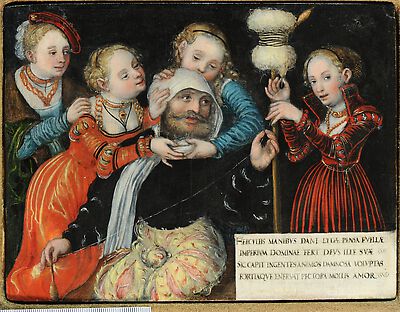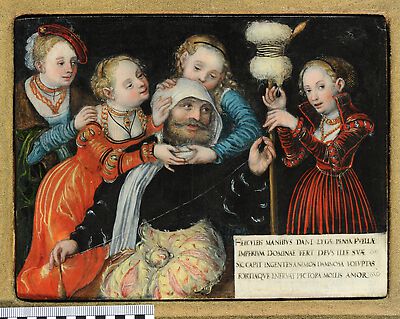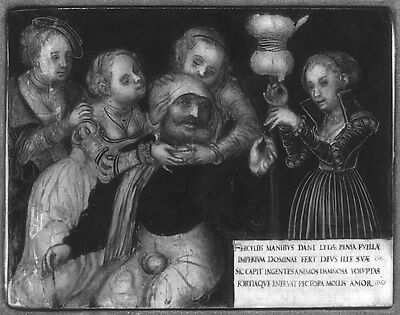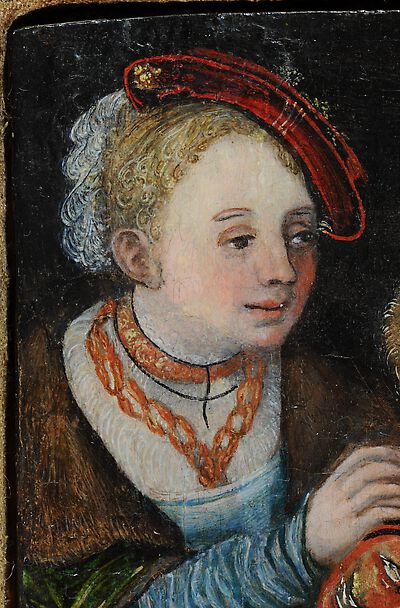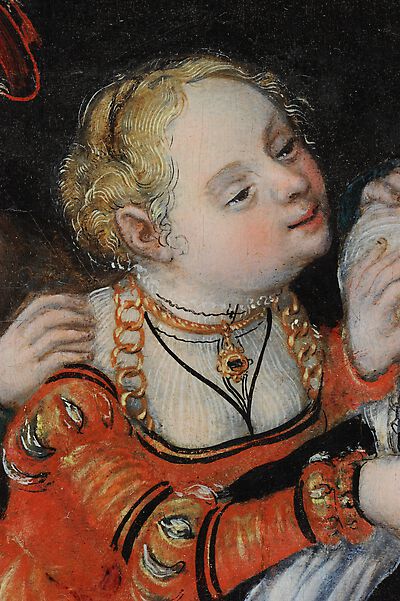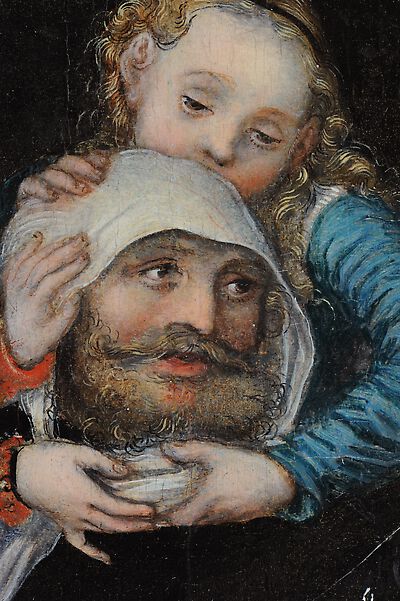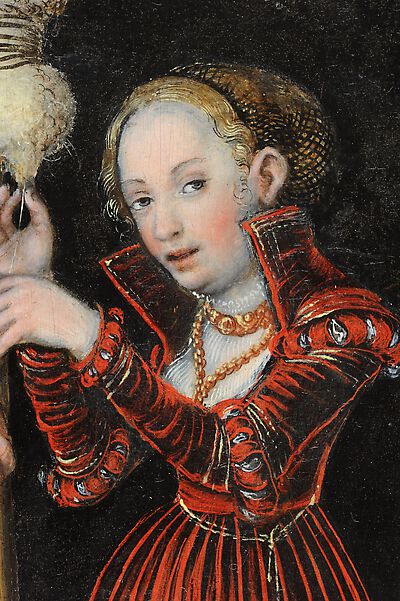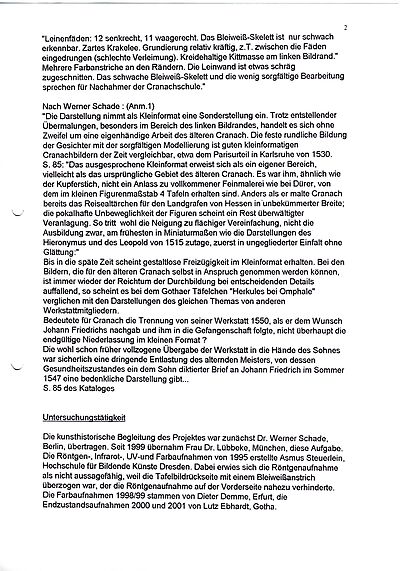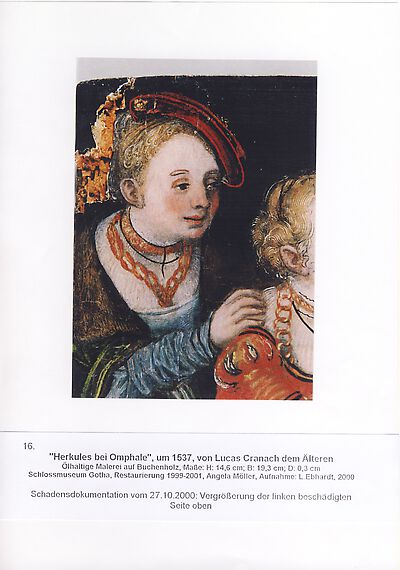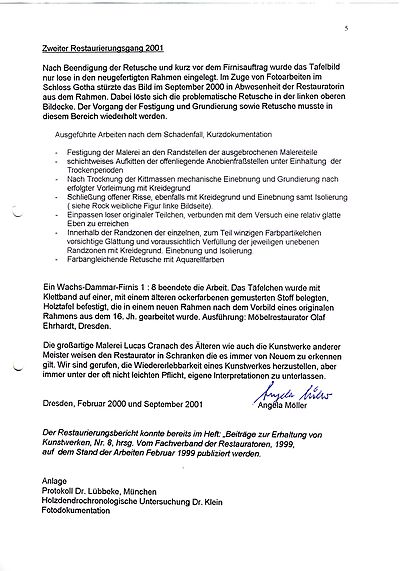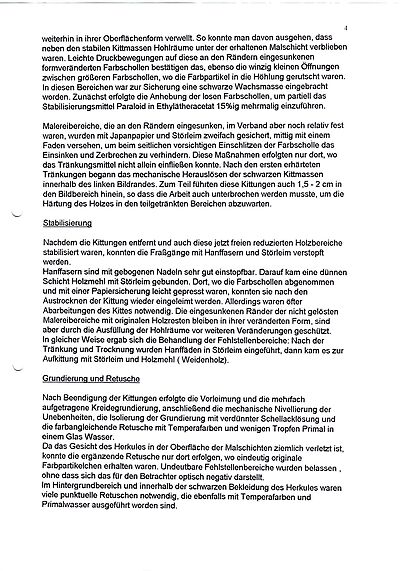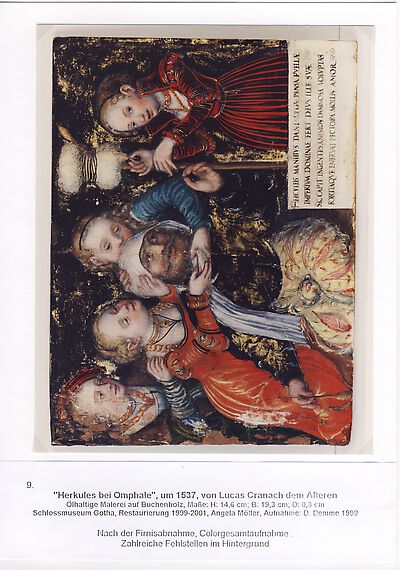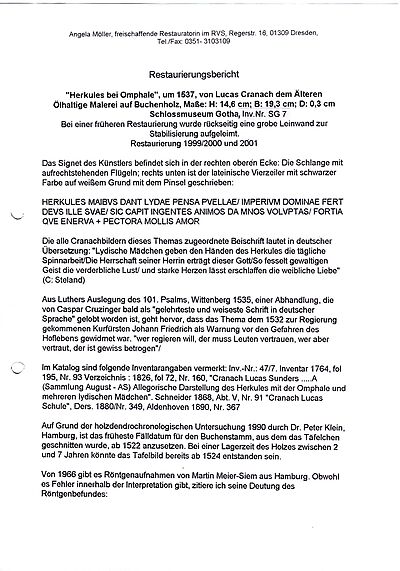- Attribution
- Lucas Cranach the Elder
Attribution
| Lucas Cranach the Elder | [Exhib. Cat. Gotha 2015, No. 63] |
- Production date
- about 1537
Production date
| about 1537 | [Exhib. Cat. Gotha 2015, No. 63] |
- Dimensions
- Dimensions of support: 14.4 x 19.2 cm
Dimensions
Dimensions of support: 14.4 x 19.2 cm
[Exhib. Cat. Gotha 1994, 24]
- Signature / Dating
Artist's insignia in the top right corner: winged serpent with elevated wings, facing left (unclear); in white paint
Signature / Dating
Artist's insignia in the top right corner: winged serpent with elevated wings, facing left (unclear); in white paint
- Inscriptions and Labels
- bottom right, four lines in Latin:
'HERCVLEIS MANIBVS DANT LYDAE PENSA PVELLAE/ IMPERIVM DOMINAE FERT DEVS ILLE SVAE/ SIC …Inscriptions and Labels
Inscriptions, Badges:
- bottom right, four lines in Latin:
'HERCVLEIS MANIBVS DANT LYDAE PENSA PVELLAE/ IMPERIVM DOMINAE FERT DEVS ILLE SVAE/ SIC CAPIT INGENTES ANIMOS DAMNOS VOLVPTAS/ FORTIAQVE ENERVAT PECTORA MOLLIS AMOR'
- Owner
- Stiftung Schloss Friedenstein, Gotha
- Repository
- Stiftung Schloss Friedenstein, Gotha
- Location
- Gotha
- CDA ID
- DE_SMG_SG7
- FR (1978) Nr.
- FR-none
- Persistent Link
- https://lucascranach.org/en/DE_SMG_SG7/
- bottom right, four lines in Latin:
